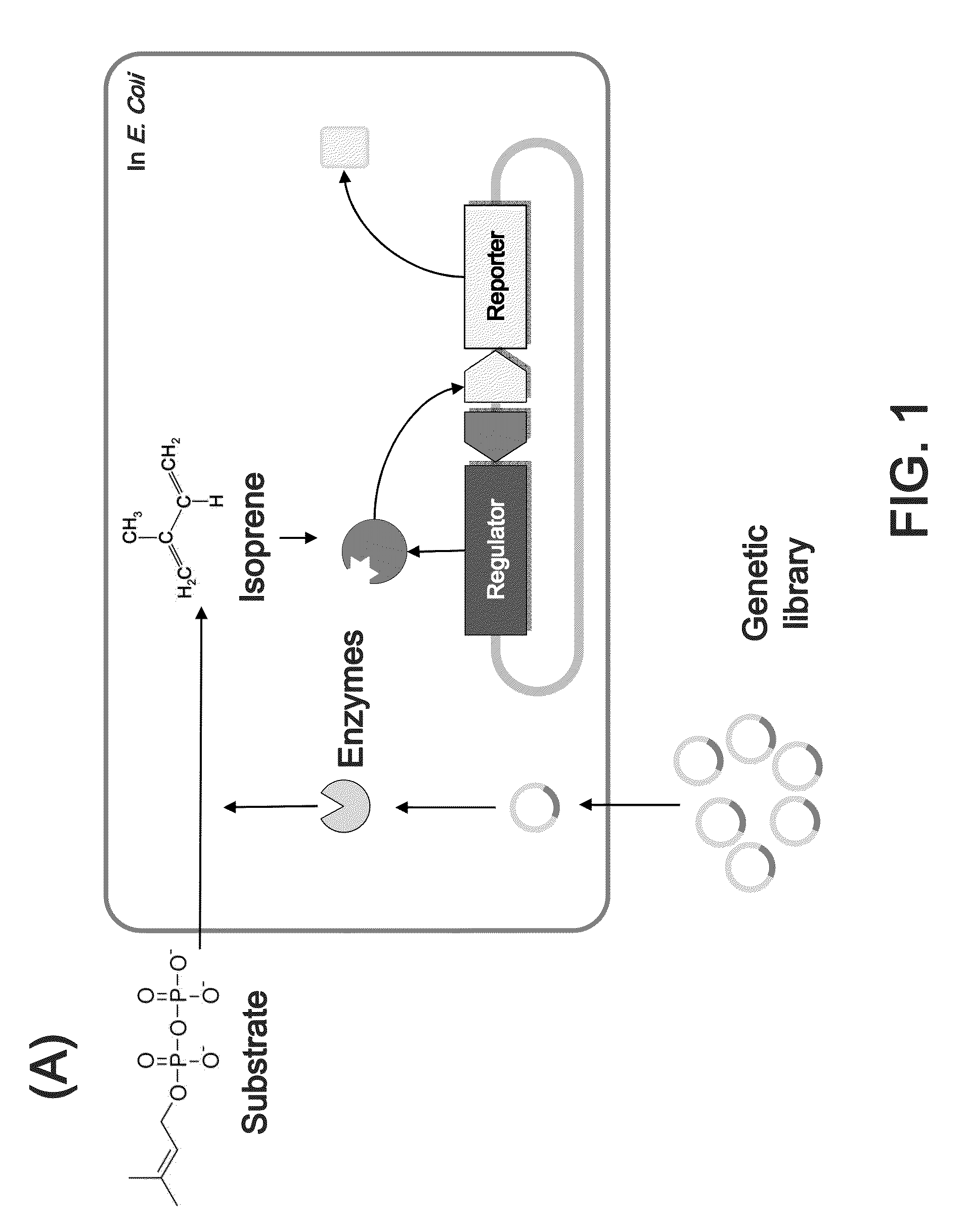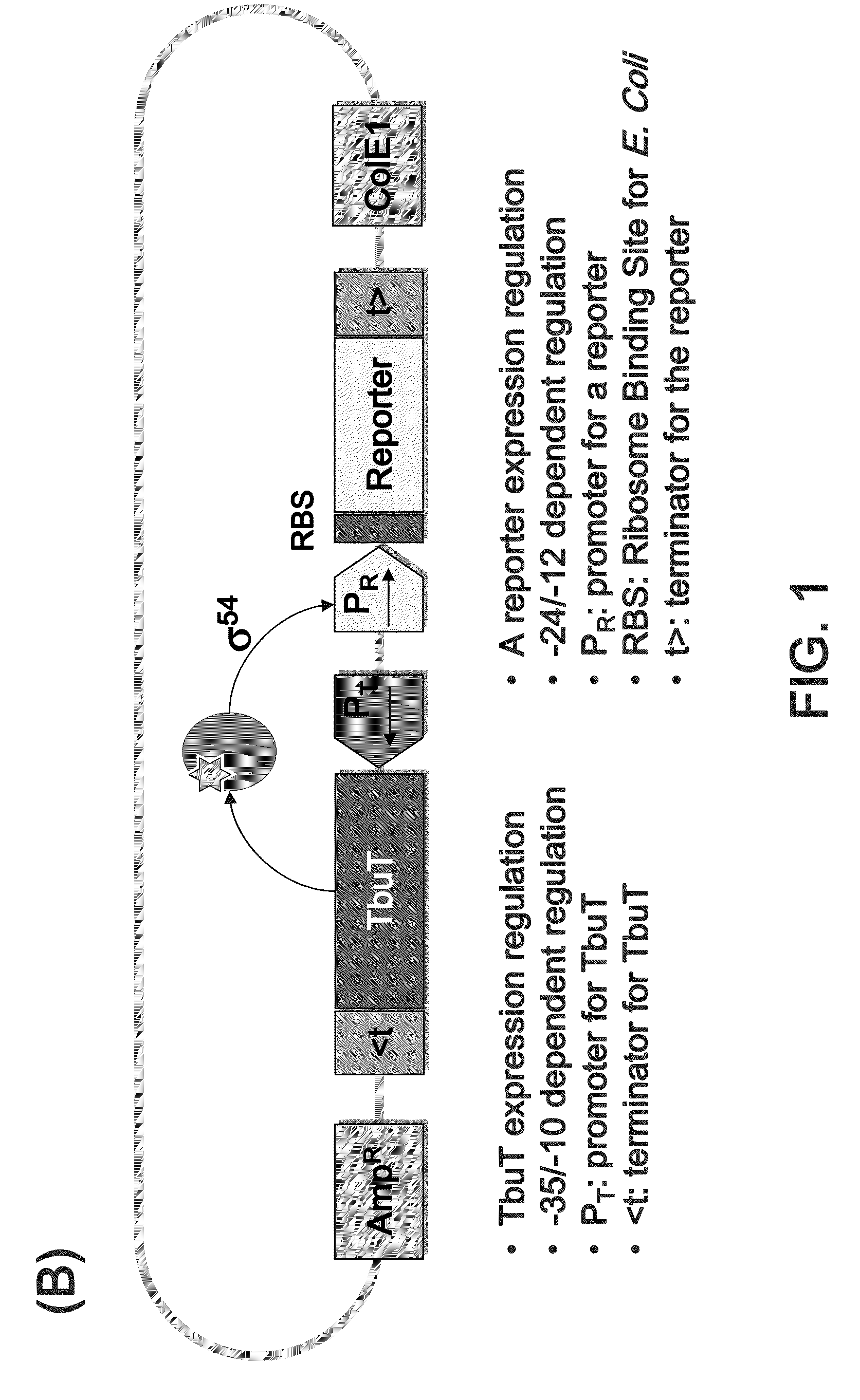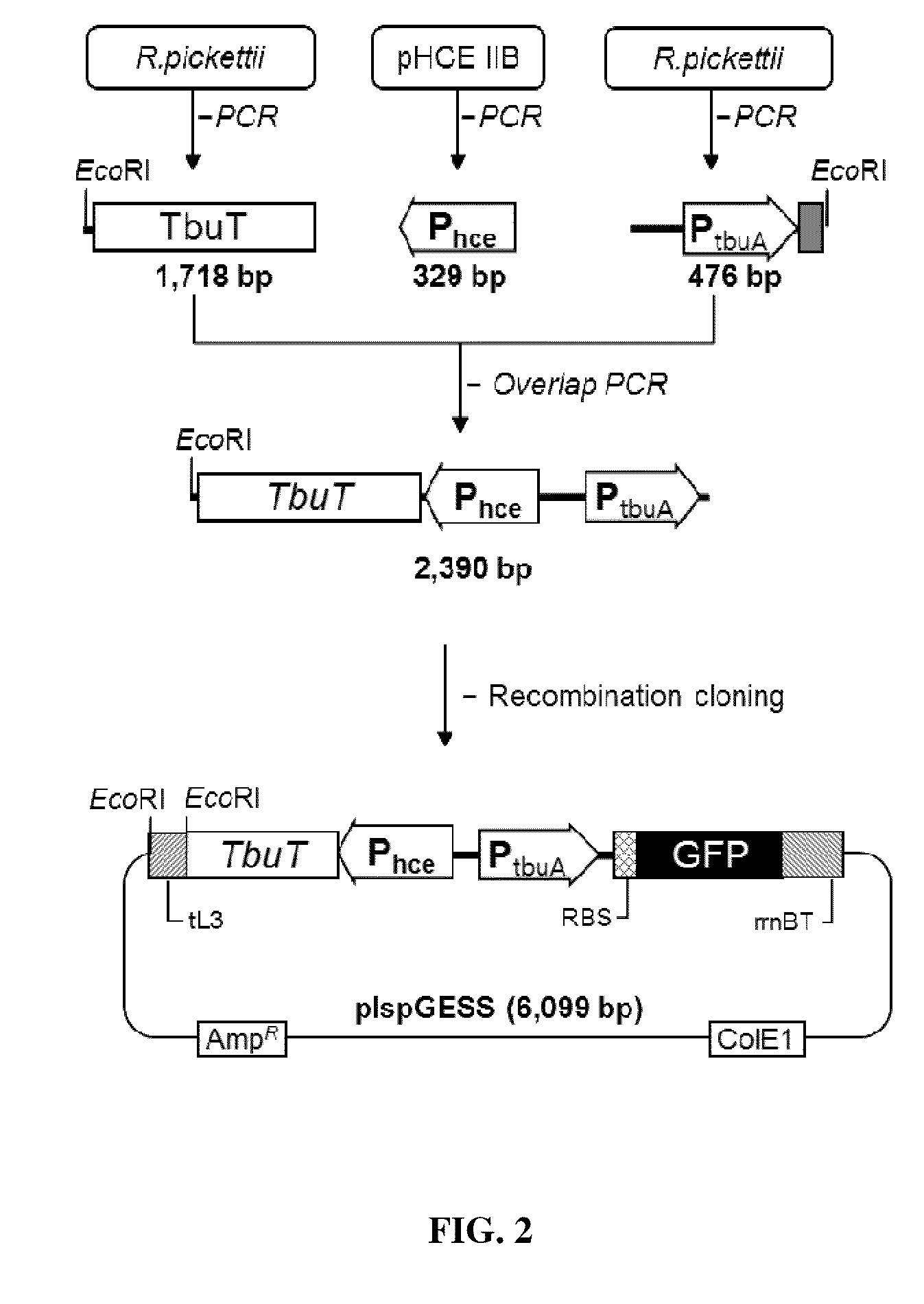Method for screening and quantifying isoprene biosynthesis enzyme activity
a biosynthesis enzyme and biosynthesis technology, applied in the field of new genetic methods for detecting and quantifying target enzyme activity, can solve the problems of limited information, low throughput and high cost of assay methods, and the correlation between phenotype and enzyme activity is hardly quantitativ
- Summary
- Abstract
- Description
- Claims
- Application Information
AI Technical Summary
Benefits of technology
Problems solved by technology
Method used
Image
Examples
example 1
Construction of Artificial Genetic Circuit
[0095]The method for investigating enzymatic activity according to the present invention requires constructing an artificial genetic circuit for sensing isoprene released from a substrate. For this, the GESS genetic circuit (Korean Patent Laid-Open Publication No. 2010-0131955) obtained in previous studies was redesigned, thereby constructing the novel genetic circuit IspGESS (FIG. 1).
[0096]A cloning process was performed in the following manner (FIG. 2). First, a recombineering method was introduced in order to replace the regulatory gene (dmpR) and a promoter region for reporter expression with the R. pickettii-derived regulatory gene (tbuT), based on the GESS plasmid constructed in the previous study (Patent, KR1020050116672; U.S. Patent Application Publication No. 2012 / 0238470). A promoter for expression of TbuT (Phce) was located at −15 bp from tbuT start codon by a restriction enzyme site and an additional sequence. The regulatory gene...
example 2
Verification of IspGESS and Analysis of Quantitative Signals for Isoprene, Toluene, Benzene and Phenol
[0097]Analysis of quantitative signals of artificial genetic circuit for isoprene, toluene, benzene and phenol.
[0098]In order to examine the isoprene, toluene, benzene and phenol compounds sensing function of pIspGESS-containing recombinant E. coli, pIspGESS of Example 1 was introduced into a single colony of E. coli DH5α (NEB, USA) by heat shock, and then the E. coli colony was inoculated into an LB liquid medium (1% (w / v) trypton, 0.5% (w / v) yeast extract, and 1% (w / v) sodium chloride) supplemented with 50 μg / Ml of ampicillin and was cultured with shaking at 37° C. for 14 hours. The culture was inoculated into M9 minimal medium (containing 50 μg / Ml ampicillin, 4% glucose and 1% thiamine) at a concentration of 1% and then cultured with shaking at 37° C. for 6 hours. Various concentrations (0-2000 μM) of isoprene was added to each of the test tubes containing the culture broth, afte...
example 3
Detection of Isoprene Biosynthesis Enzyme Using IspGESS
[0102]Using the IspGESS genetic circuit according to the present invention, activity of IspSm1, P. trichocarpa-derived IspS (USP US2010 / 000376A1) was sensed.
[0103]First, the IspSm1 gene was inserted into the NcoI-AvrII restriction enzyme site of a pCDF-duet vector (Novagen, USA) to prepare pCDF-IspSm1, which was then introduced into an E. coli BL21 (DE3) strain (NEB, USA) containing pIspGESS of Example 150 μg / Ml of ampicillin and 10 μg / Ml of streptomycin were added to LB liquid medium containing 0.1 mM of IPTG (isopropyl-thio-β-Dgalactopyranoside), and E. coli cells were cultured with shaking in the LB liquid medium at 37° C. for 16 hours. Then, the cultured cells were transferred into M9 liquid medium containing 0.1 mM IPTG and were cultured at 28° C. and 200 rpm for 20 hours. 4 ml of the culture medium was placed in a 5 ml vial into which the previously cultured bacterial strain was then inoculated at a concentration of 1%. Th...
PUM
| Property | Measurement | Unit |
|---|---|---|
| boiling point | aaaaa | aaaaa |
| melting point | aaaaa | aaaaa |
| concentration | aaaaa | aaaaa |
Abstract
Description
Claims
Application Information
 Login to view more
Login to view more - R&D Engineer
- R&D Manager
- IP Professional
- Industry Leading Data Capabilities
- Powerful AI technology
- Patent DNA Extraction
Browse by: Latest US Patents, China's latest patents, Technical Efficacy Thesaurus, Application Domain, Technology Topic.
© 2024 PatSnap. All rights reserved.Legal|Privacy policy|Modern Slavery Act Transparency Statement|Sitemap



